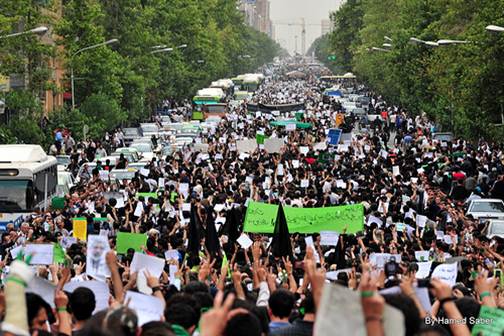Protecting Citizens in Political Movements

I've blogged quite a bit lately on security matters related to working with groups in closed societies because it's an important subject and from my standpoint there are a few more topics that need to be covered. This post is about protecting citizens, as opposed to trained activists, in countries where popular movements lead to marches, protests or other forms of public engagement.
Risks for activists who are working in tough environments and using communication, circumvention and other technologies can at best be minimized - and requires a complex set of technologies and procedures that must be artfully designed for the specific political environment then diligently adhered to. Many activists are fully aware of and willing to take the risks required.
However, there are significant risks for average, untrained citizens involved in political movements as well. Many often use technology tools much less sophisticated than those used by activists, such as mobile phones, digital cameras, social network platforms and even Internet cafes.
All of these day-to-day technologies may unknowingly put the user at risk.
Here are a few ways that most readers of this blog will likely be aware of and may even take for granted, but that citizens may get themselves in trouble without thinking about it:
- Pictures they take of other citizens or that are taken of them using digital cameras may be used to identify them to the regime if they are published on the Internet, especially social networks and YouTube;
- Participation in social networks by associating themselves with political causes, even if only to "support" a cause or "friend" an activist, may put them at risk;
- Mobile phone calls or text messages can be monitored - both for content as well as to track who the citizen has communicated with - including receiving "viral" or blast text messages;
- Pictures taken by digital cameras and later transferred to the Internet can sometimes be tracked back to the camera and the owner
- Internet cafes are insecure, all activity including passwords and any information typed on the keyboard can be captured
- the list goes on...
Therefore, organizations inside and outside these countries, like NDI and our partners, must consider these risks even if they seem obvious and work to educate the public on them as much as possible. It is irresponsible to put technology in people’s hands, or encourage them to use technologies, when it may make it more likely they could be harassed, arrested or worse.
A recent example of this occurred in Iran, as documented on this Global Voices blog post. The regime used pictures of crowds posted online and social network content to identify and arrest people who participated in the 2009 protests by posting these images on their own websites and asking supporters to help identify protesters using a crowdsourcing methodology. A chilling example of how technologies can be used both to advance democracy as well as to set it back.
Photograph above courtesy of Hamid Saber, from Flickr.
